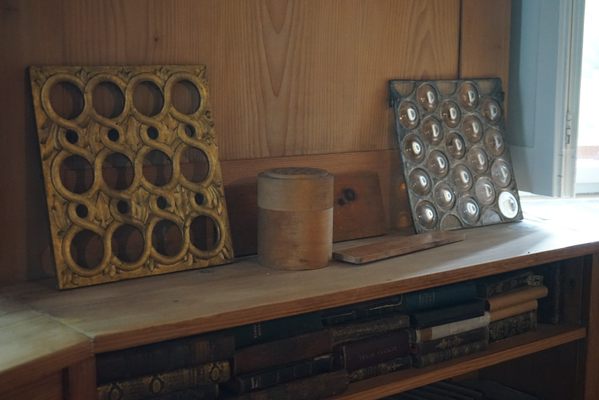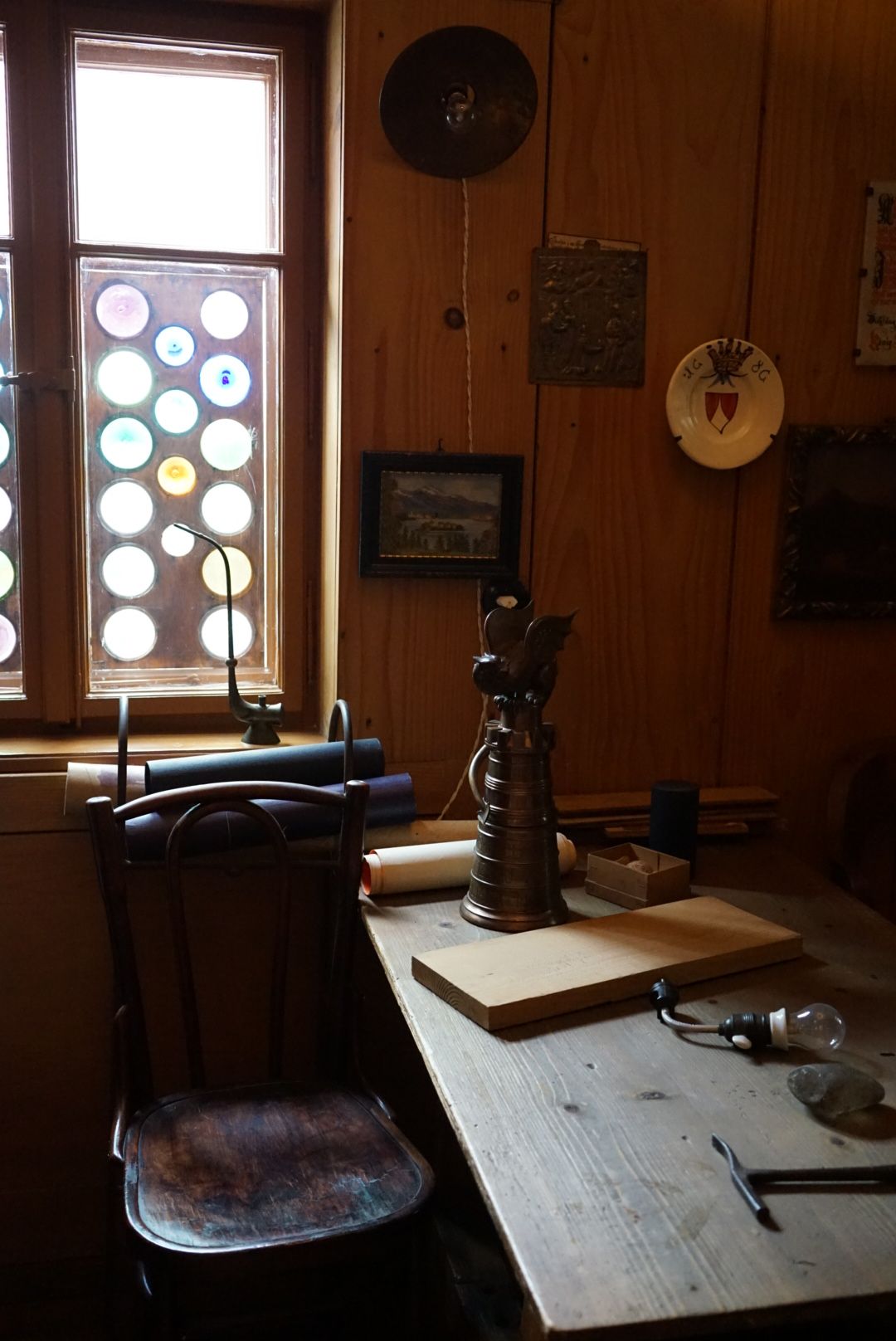About
Jože Plečnik was a man constantly at work on something. When he wasn’t designing much of his native city of Ljubljana, the capital of Slovenia, he was devising gadgets for the house in which lived, in the suburb of Trvono. He usually designed for convenience or economy, with barely a hint of extravagance—he smoked the cheapest cigarettes, used pencils till they were little more than stubs, and slept in a narrow single bed.
After having worked in the studio of Viennese secessionist Otto Wagner and designed a flat in Prague Castle for Thomas Masaryk, the first president of Czechoslovakia, in 1921 the architect moved into his brother's house in Ljubljana and soon set about redesigning it to create his dream home. He envisioned "a tower, a mule, me and the garden."
He got his garden, which extends some 150 feet to the back, and a tower, a simple circular two-storied wing which he designed and added to the house. When he later bought the neighboring house, he added a conservatory or "winter garden." This marked the beginning of his Ljubljana phase, during which he designed landmarks like the Triple Bridge and the National and University library.
After his death, his nephew was the caretaker of the complex, and the city took it over and opened it as a museum in 1974. It saw extensive renovation between 2013 and 2015, and the rooms were restored to their original state, as they were laid out when Plečnik was alive. Today, a permanent exhibition based on Plečnik and his career is housed in the complex. His studio, where he conceived his ideas for building Ljubljana in the classical idiom with Secessionist or art nouveau touches, is still very much as he left it, and contains his equipment, sketches, plans, and models.
The most curious item on display is the candle-holder, a brass curiosity that can be raised and lowered to avoid wasting wax. A dragon’s head, which also looks like the devil, curves around toward the candle ready to light it with its fire, but to to avoid that, the candle can be lowered. Other ingenious gadgets are scattered around the house. The chairs were made hard and rigid, meant for work, study, and designing—not for relaxation. That was Plečnik's ascetic philosophy, which fit well with his monk-like existence. In the kitchen, there’s also a special chair where he could eat and work at once.
Plečnik lived alone and rejected all suggestions that he get married. His house was designed to be a simple but practical bachelor pad—his bookcase was within reach of his bed, a narrow, unadorned piece of furniture, and his light switch could be reached from his bed too. He described his house as a "testing hotbed" in which he would experiment with architectural ideas, most commonly how he could give classical architecture a new lease of life in his beloved Ljubljana.
Related Tags
Know Before You Go
An easy 15 minutes or so walk from the center of Ljubljana. Cross the bridge flamboyantly designed by Jože Plečnik, carry on past the church and it's another 100 metres on the right.
Forest to Table in Alpine Slovenia
A Forest-to-Table Gastronomy Adventure in Slovenia.
Book NowCommunity Contributors
Added By
Published
June 12, 2017
Sources
- http://www.slovenia.si/culture/arts/painting-and-architecture/plecniks-ljubljana/
- https://www.visitljubljana.com/en/visitors/things-to-do/sightseeing/plecnik-house/
- http://www.zvkds.si/en/clanek/ljubljana-plecniks-house
- http://www.iconichouses.org/news/plecnik-house-in-ljubljana
- http://www.mgml.si/en/plecnik-house-503/current-exhibition-25417/the-unique-plecnik-house-with-a-permanent-plecnik-exhibition/













































